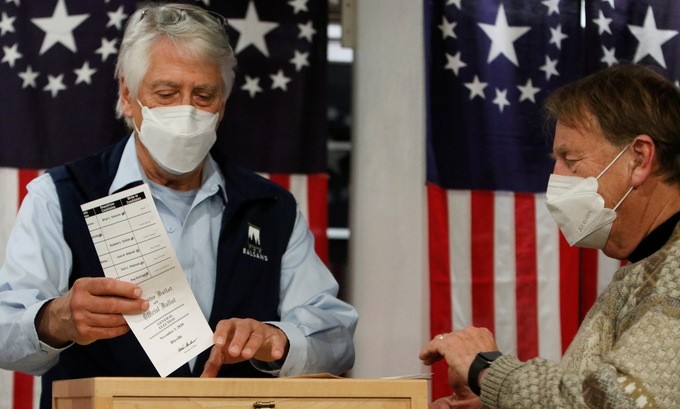Not only are there differences in views on policy, similar to the traditional colours representing the two parties, but the multidimensional crisis stemming from the COVID-19 pandemic has also created many unexpected factors in the 2020 US general election.
In addition to electing a new president and vice president, US voters will select parliamentarians for the next term, accordingly, re-electing all 435 seats in the House of Representatives and 35 out of the total 100 seats in the Senate, as well as voting for 11 positions of state governors and about 5,000 seats in state legislatures across the country. Currently, the Democrats are controlling the House of Representatives, while the Republicans hold a fragile majority in the Senate. The race to the two houses of Congress this year will reshape the dominant colour of US politics, with both the “elephant” and the “donkey” aiming to retain a majority in at least one house of Congress.
In the US general election, the intense race to the White House has always received special attention, with the 2020 election being no exception. Voters will elect the head of state and government to steer the country in the next four years, with an immediate task of promptly lifting the US out of the dual crisis caused by the pandemic. The task of US voters is no less difficult when they have to choose between incumbent President Donald Trump, who represents the blue colour of the conservative Republicans, and former Vice President Joe Biden with the red colour of the liberal Democrats. The different, or even opposing, stances on policy of the two candidates not only reflects the contrasting nuances between the two parties, but also highlights the division in US politics and the urgent goal of healing and uniting the country.
Confident with the policy of “Make America Great Again” in his debut tenure, President Trump, in his bid to run for a second term, is sending a message “Keep America Great” with commitments to boosting economic development, job creation and tax reduction. The pandemic has pushed the world’s no. 1 economy into a severe recession and forced tens of millions of US workers to lose their jobs. Therefore, restoring economic growth to pre-pandemic levels and creating tens of millions of new jobs are the priorities of the incumbent president. President Trump has set a target of having a COVID-19 vaccine by the end of the year in order to bring the country back to a normal state from the beginning of 2021. He has also pledged to tackle violent protests, to re-consolidate law enforcement forces, and to take tougher actions against the issue of illegal immigration. In terms of foreign affairs, the slogan “America First” will be maintained with the prioritised goal of promoting balanced trade, reducing international contributions, minimising interference from the outside and focusing on strengthening internal power to promote a stronger US.
Meanwhile, with many conflicting views with those of the Republican Party’s representative, Democratic presidential candidate Joe Biden is pursuing the plan “Rebuild for the better”. Specifically, he gives top priority to coping with COVID-19 and expanding the universal health care programme, also known as Obamacare, rather than reversing the predecessor’s policies. In addition to abolishing the incumbent administration’s tax reduction programme, Biden has proposed an increase in corporate tax. An ambitious climate goal has been set forth by the former US Vice President, together with his commitment to bring the US back to the Paris Agreement on climate change. Regarding foreign affairs, the Democratic presidential candidate has voiced disagreement with the White House’s recent moves to withdraw the US from global mechanisms, organisations and agreements. He advocates restoring the international position of the US with a series of commitments to change, such as dramatically improving relations between the US and its allies, especially those within NATO and in Europe, and promoting the resolution of disputes with trading partners through dialogue or international efforts, instead of waging a trade war.
The 2020 US general election takes place in an extremely special context as the pandemic has pushed the US into a multidimensional crisis, from the health care crisis to economic recession and social crisis, while the inherent problems in the country have not yet been resolved, such as political division and racism. With more than 9.4 million COVID-19 cases, including over 236,000 deaths, the disease has further deepened partisan conflicts, becoming the top concern of US voters as they wonder whether to vote for the colour red or blue.
The survey results thus far have still showed the advantage in favour of the Democratic Party’s candidate, but this does not mean that the chance of “overturning the game” has ended for the Republican candidate. The winning colour has not come out, because the US elections always feature unexpected factors right up to the last minute, which could even mark a turning point and go contrary to predictions.
















